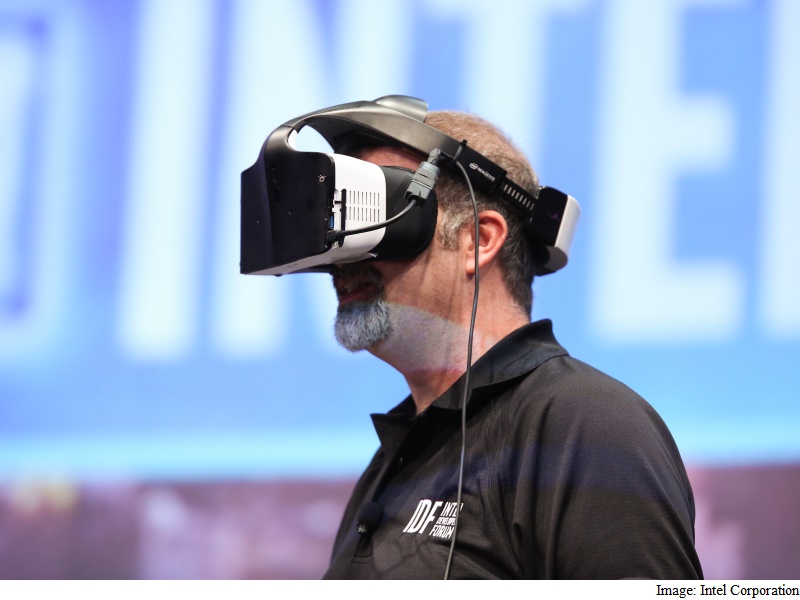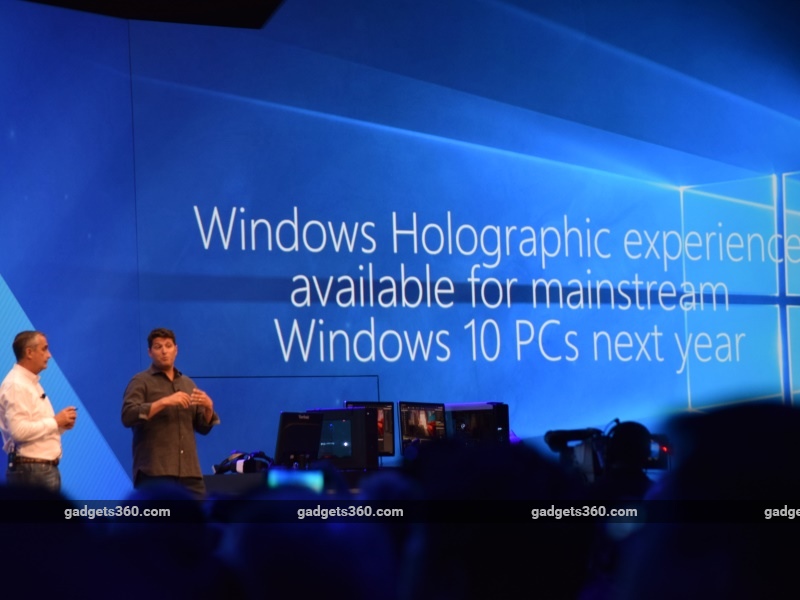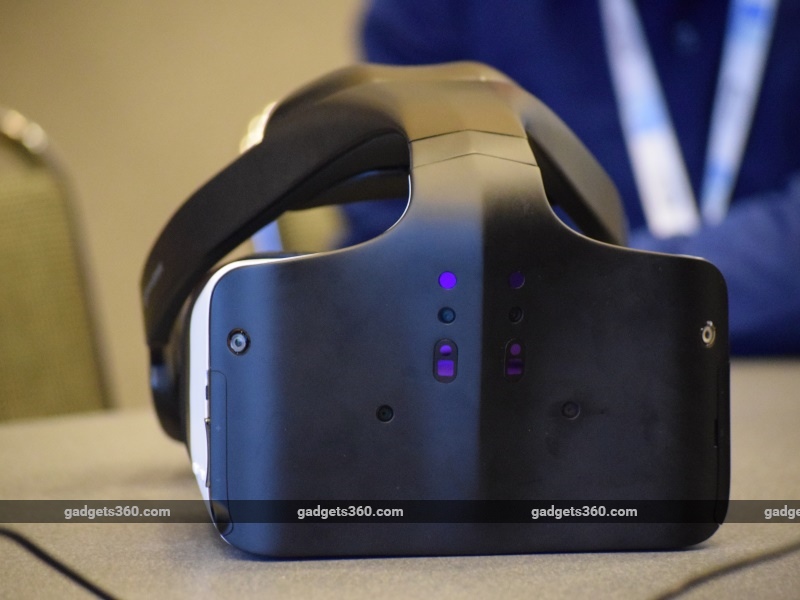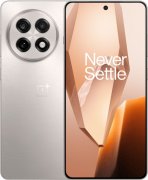Intel CEO Brian Krzanich announced what the company is calling
"merged reality" experiences during the opening keynote of the 2016
Intel Developers' Forum event in San Francisco Tuesday. Merged reality
envisions an immersive world that users can walk around and interact
with as if they are physically present and participating in the scene,
as delivered by a fully self-contained headset developed under the name
"Project Alloy".
A video demonstration showed one possible experience: an interactive first-person experience
of walking into a party, interacting with guests, pausing the action,
exploring 360-degree views, and moving people around such that the
course of events and the virtual guests' behaviour changed because of
those actions. A more modest live demonstration showed a volunteer
moving around a room and manipulating physical objects such as a switch
and a lathe.
The Project Alloy headset does not need to be
tethered to a PC, allowing users the freedom of walking around and
moving on all six axes. If a user gets too close to a real-world object
such as a wall or another person, it will pop into the scene, allowing
him or her to avoid it. Users manipulate objects in the virtual world
directly, negating the need for hand-held controllers. External sensing
hardware is partially or fully replaced with Intel RealSense 3D cameras
within the headset.
Intel's Alloy hardware and open APIs will be
made available in 2017, allowing other companies to create their own
products and experiences around this platform.

Krzanich also
invited Terry Myerson, Executive Vice President of the Windows and
Devices Group, Microsoft, on stage to talk about how the two companies
are collaborating. Microsoft refers to such experiences as "mixed
reality", and is working on a set of specifications so that everyday
Windows 10 PCs can be used with head-mounted displays such as
Microsoft's own HoloLens.
Microsoft is working towards releasing
v1.0 of the spec in December this year, and will release an update for
Windows 10 in 2017 which will introduce the Windows Holographic Shell,
an interface for head-mounted displays which will enable users to
visualise 2D and 3D Universal Windows applications at the same time.
Microsoft had announced Windows Holographic at Computex this year,
promising that it would run on a wide range of devices. Partners already
on board at the time included Intel, AMD, Qualcomm, HTC, Acer, Asus,
Dell, HP, Lenovo, and MSI.

Krzanich and Myerson showed a video
demonstration of the Windows Holographic Shell running on an Intel NUC
PC as proof that it is able to deliver a smooth 90fps experience using
Intel's integrated graphics hardware. The combination of Windows
Holographic Shell and the open-source Project Alloy hardware should
allow developers to create their own experiences next year.
Other
announcements made by Krzanich during his keynote included partnerships
with BMW on autonomous vehicles and GE on big data sensing for smart
cities; the new Intel Joule platform for IoT devices; the Euclid
developer kit with integrated RealSense for robotics researchers and
makers; and Aero Platform drone developer kits in the form of a regular
integrated circuit board as well as an actual drone.
Disclosure: Intel paid for the correspondent's flight and accommodation for IDF 2016 in San Francisco.
 Insta360 X4 BMW Motorrad Limited Edition Action Camera Launched: Price, Specifications1 November 2024
Insta360 X4 BMW Motorrad Limited Edition Action Camera Launched: Price, Specifications1 November 2024 EV Buyers First Consider Usage Pattern Rather than Range of Car: BMW India President18 January 2024
EV Buyers First Consider Usage Pattern Rather than Range of Car: BMW India President18 January 2024 iQoo 12 Pro BMW M Motorsport Edition Design Revealed Ahead of November 7 Launch28 October 2023
iQoo 12 Pro BMW M Motorsport Edition Design Revealed Ahead of November 7 Launch28 October 2023 iPhone 15 Pro Max vs Samsung Galaxy S23 Ultra: Price in India, Specifications Compared17 September 2023
iPhone 15 Pro Max vs Samsung Galaxy S23 Ultra: Price in India, Specifications Compared17 September 2023 Infinix Note 30 VIP Racing Edition With BMW-Inspired Design Launched: Price, Specifications15 September 2023
Infinix Note 30 VIP Racing Edition With BMW-Inspired Design Launched: Price, Specifications15 September 2023



![Gadgets 360 With Technical Guruji: News of the Week [March 29, 2025]](https://c.ndtvimg.com/2025-03/9cu1890s_news-of-the-week_160x120_29_March_25.jpg?downsize=180:*)











